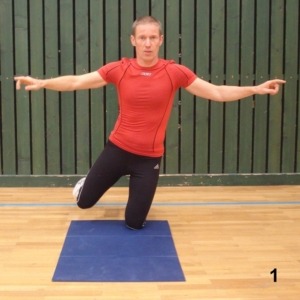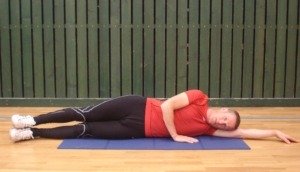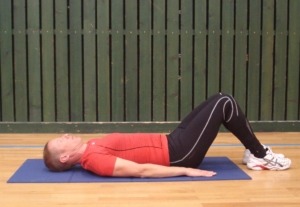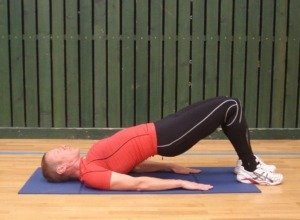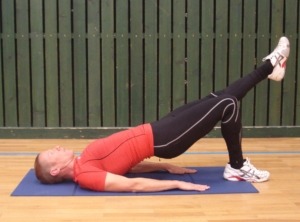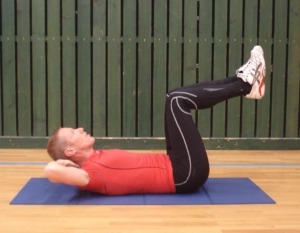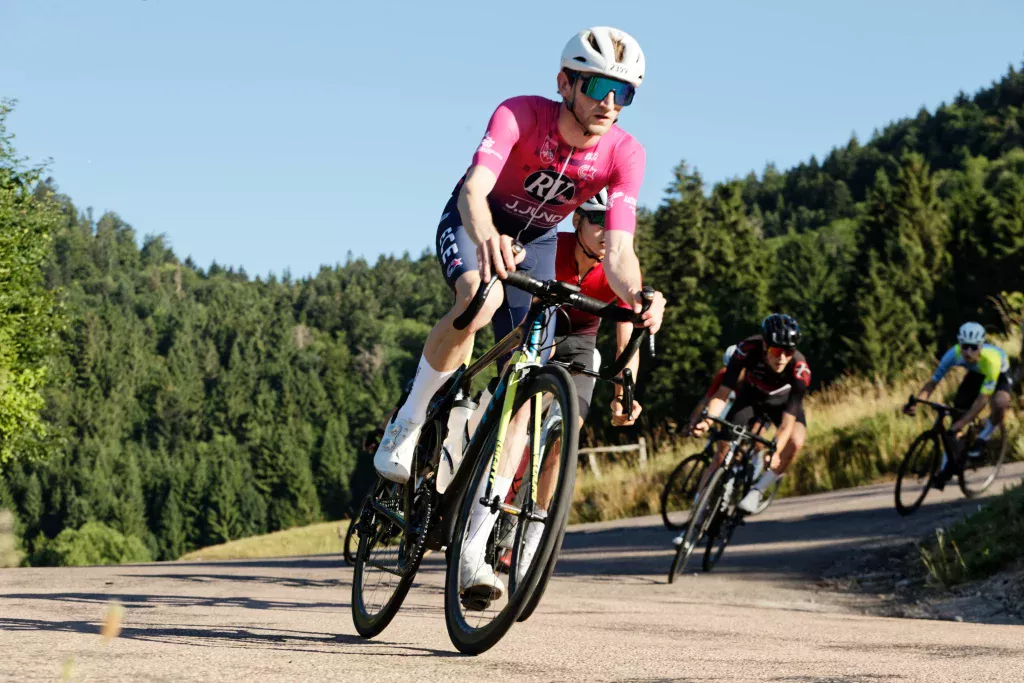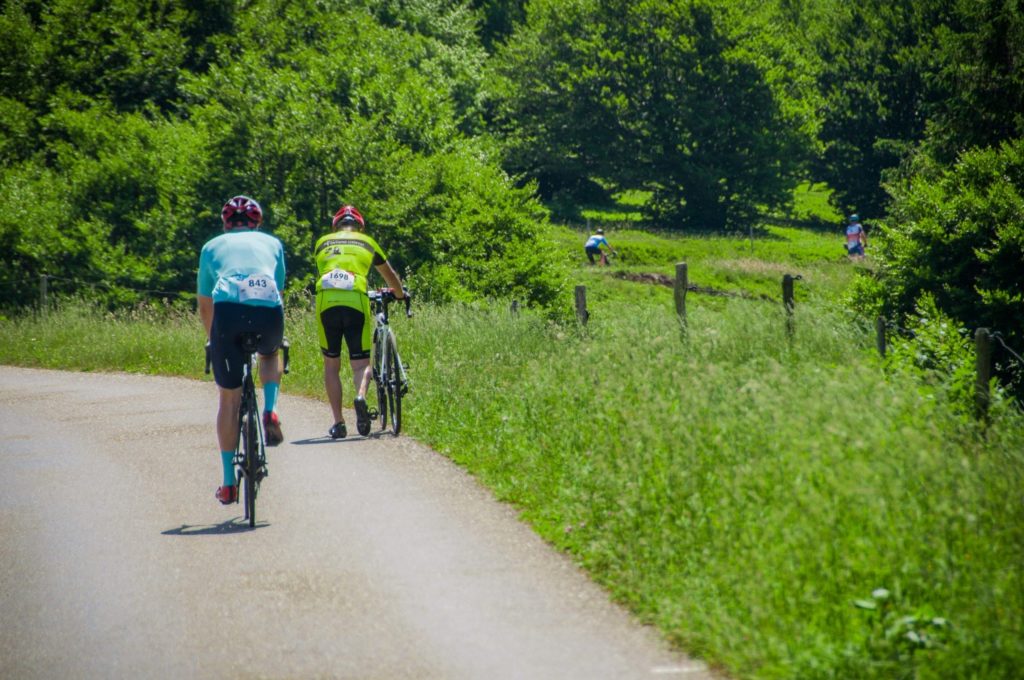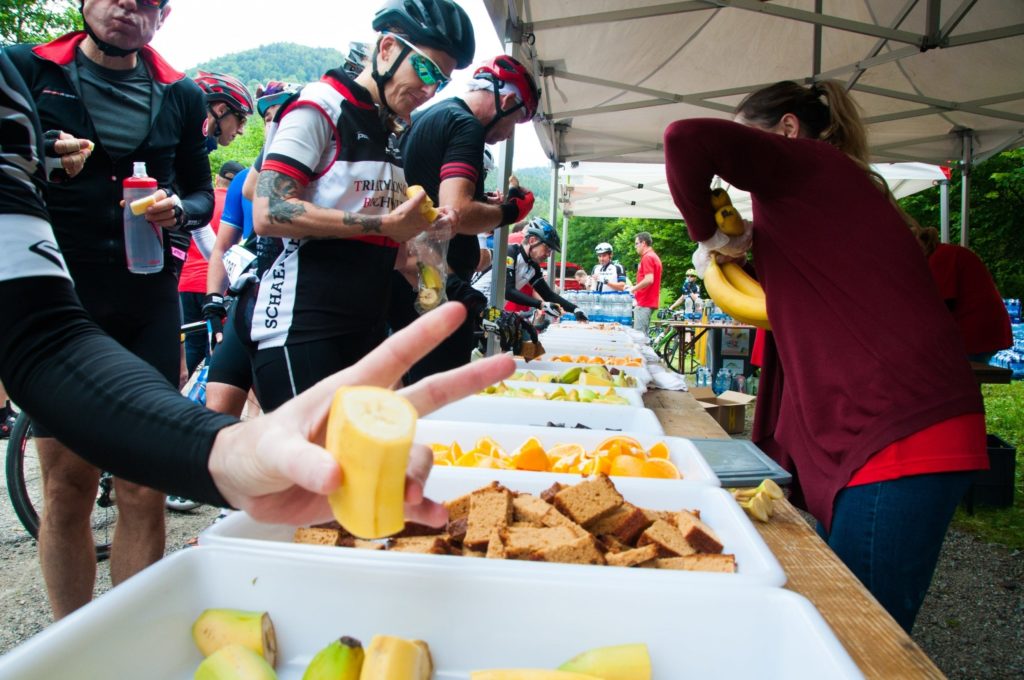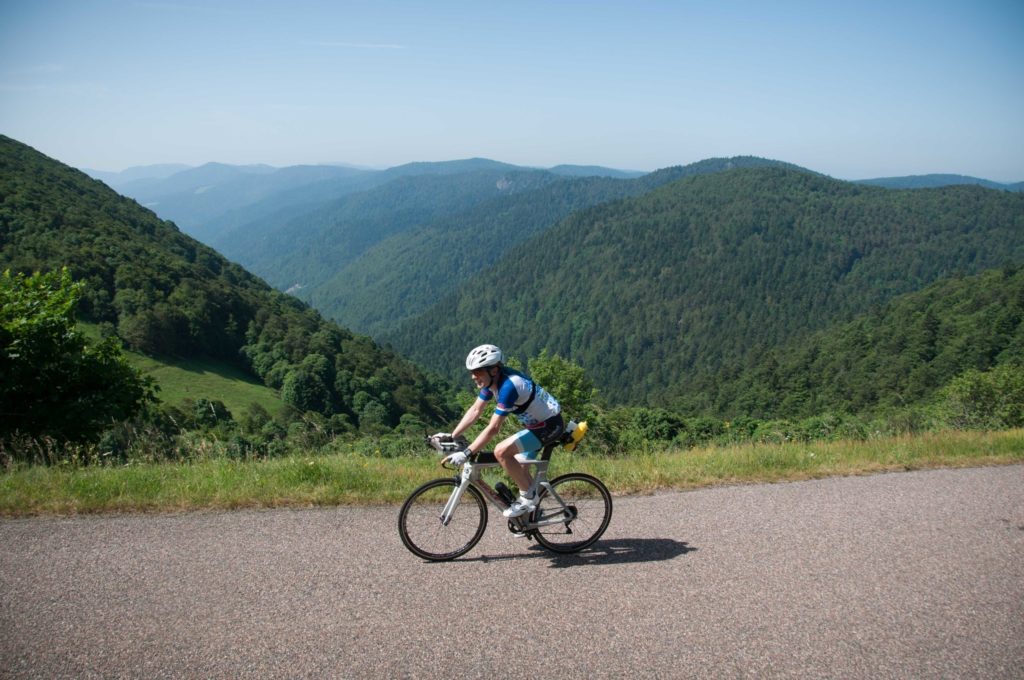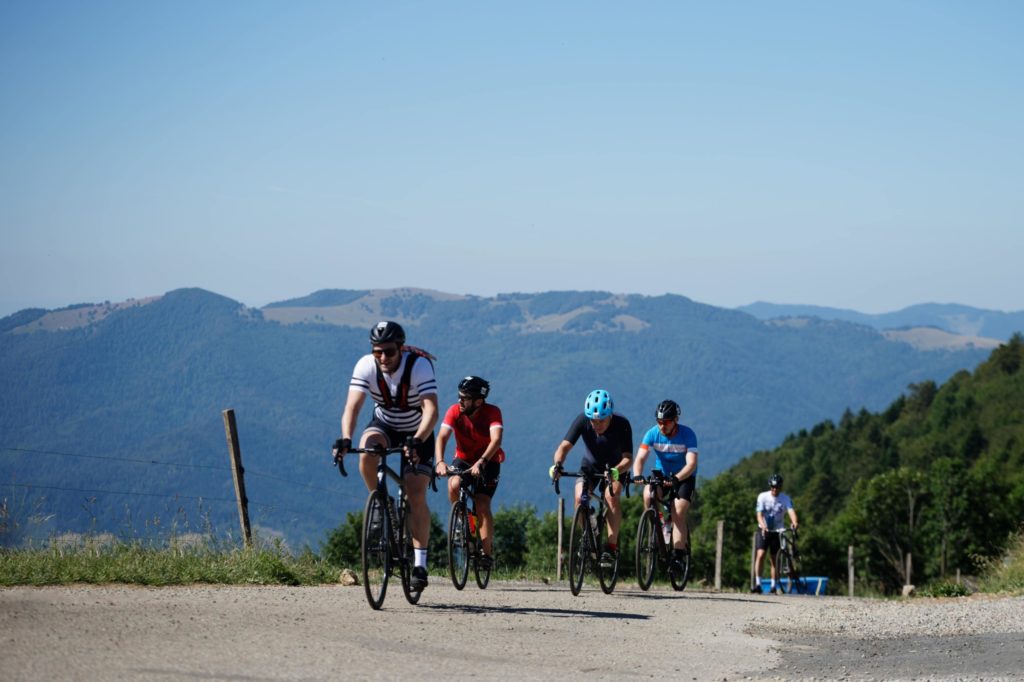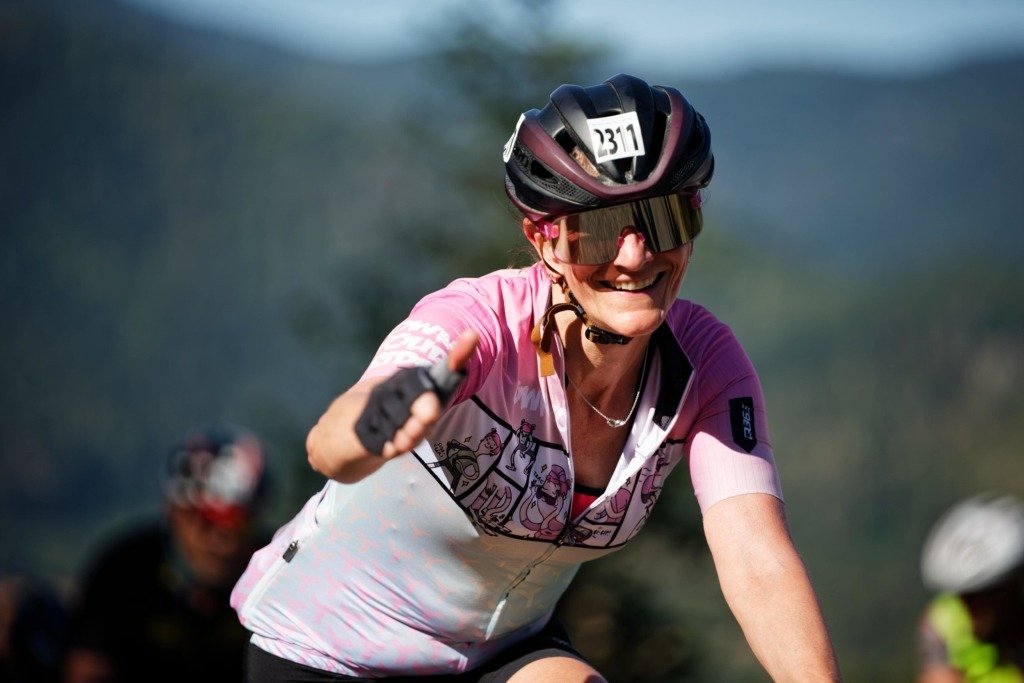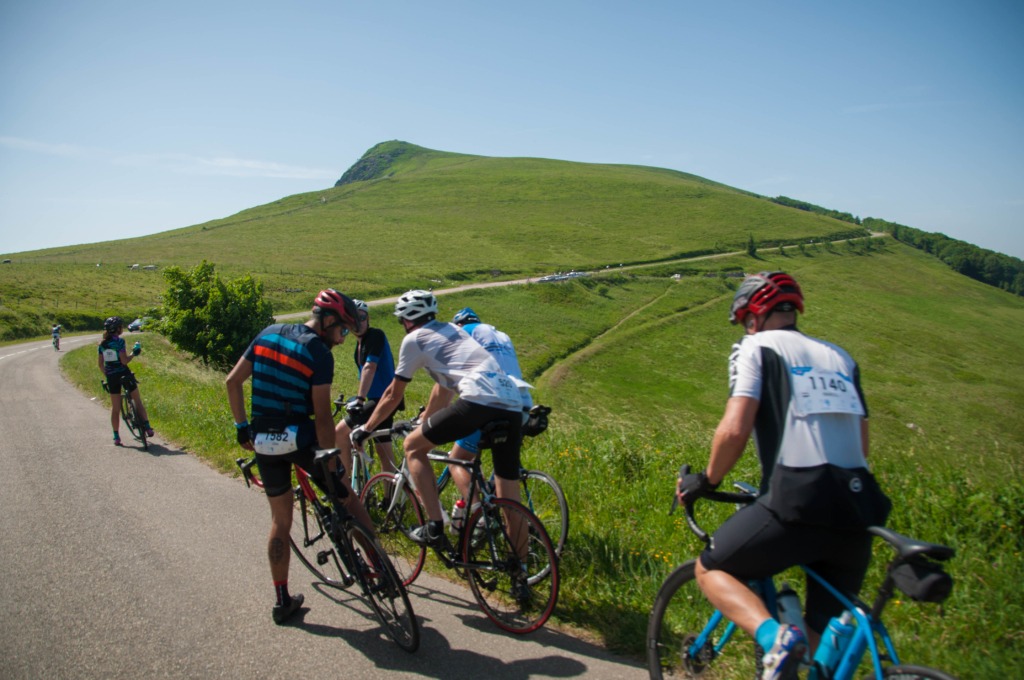You have got your strength back and are already feeling motivated? You can’t wait for the weather to get warmer so you can build up your riding hours? That’s a good sign, but there is still time left. L’Alsacienne 2025 is scheduled for the end of June, and limiting your training to the volume of kilometres alone is not necessarily wise.
What would you say to offering yourself regular physical training sessions? Put away your helmet and shoes, sit down on your living room carpet, and we will guide you!
Strength in your legs, but not only!
Body building involves increasing your strength.
It may target the muscles in the lower limbs, which are directly used in pedalling. On your bike, using very high gears, this is called the development of specific strength.
It can also be done in a specialised gym by using additional weights, provided you are guided by a trainer with an excellent knowledge of cycling. Otherwise, it is possible to use other means, even without weights, for example by combining isometric exercise known as “chair stepping” with dynamic movements such as rapid half squats.
Body building is also intended to strengthen the trunk. This is even the main aim and the basis of physical training in winter. The term “core training” means just that, as it targets the “core” which links the thorax to the pelvis. Its strength is vital, as it supports the only bone structure present, the spine.
See also our article on personalising your practice for a successful cycling season!
Prevention through body building
Core training aims therefore to tone up your abdominal and back muscles. It is not about creating a six-pack, but preferring a more overall approach, by also using your deep muscles.
These help you to adopt the right posture on a daily basis and avoid excessive stress in the lumbar vertebrae. Furthermore, they facilitate breathing and digestion.
More efficient pedalling
Although it is hard to find a scientific study that shows a clear correlation between core training and cycling performance, we have all seen cyclists with jerky pedalling, waddling along on their bike without being very efficient.
You could invest in a rigid bike... but making an effort to stay in good shape is essential, and in any case cheaper and more profitable. It will also help you in your practice of cycling, in particular for the courses at L'Alsacienne, the Vosges cyclosportive.
The tone of your abdominal and back muscles play a key role in supporting the pelvis and transmitting the pedalling force with as little loss as possible.
Simple and varied core training exercises
Core training exercises can be both simple and effective. Try straightening yourself up, and then throwing yourself off balance. For example, on your knees, contract your abdominal muscles, lift up one knee and try to keep your balance (photo 1).
On all fours, straighten yourself up horizontally. Lift up your left hand and your right foot and knee. Hold the position for a few seconds without losing your balance, while taking a deep breath. Now do the same with the other side...
You can also keep both hands on the floor and lift up both knees (photo 2).
Photo Credit : Eric Géhin
It is clear that core training sessions can take very varied forms, and the exercises proposed below are just a few examples. To be effective, they don’t need to be complicated... as you will see for yourself, simple does not necessarily mean easy!
EXERCISE 1
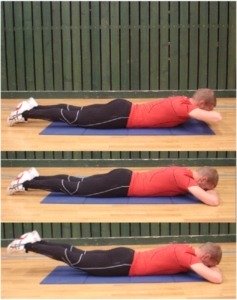
In prone position (lying face downwards), feet hip width apart, hands on the ground under the forehead.
Instructions:
Lift up your elbows and hands about 5 cm and hold the position. Return to the start position. Lift up your knees, stretch your legs backwards as far as possible and hold the position. Return to the start position. Continue by alternating the movements: lift up the upper limbs, relax, lift up the lower limbs, relax etc.
Possible variant:
After lifting up the upper limbs, stretch out your arms into a V shape. After lifting up the lower limbs, open your legs into a V shape.
Photo Credit : Eric Géhin
EXERCISE 2
Photo Credit : Eric Géhin
Start position:
Lying on your side with your head resting on your arm. Using your free hand to balance yourself.
Instructions:
Lift up your feet and stretch your knees as far as possible.
EXERCISE 3
Photo Credit : Eric Géhin
Start position:
Lying on your back, knees and legs bent, with your feet flat on the floor.
Instructions:
Raise your pelvis and lift up your back.
Bring your knees/pelvis/shoulders into line.
Return to the start position slowly, lowering your spine onto the mat, one vertebra at a time.
Photo Credit : Eric Géhin
- While holding the position, alternately lift your right foot/left foot by 1 cm.
- While holding the position, stretch out one knee and bring the leg into line with the thigh and back.
EXERCISE 4
Photo Credit : Eric Géhin
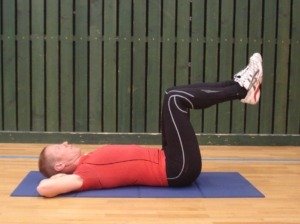
Start position:
Lying on your back, hands behind your head, thighs vertical, legs outstretched.
Instructions:
Each time you breathe out, lift up your shoulders, while contracting your perineum and buttock muscles.
The aim is not to lift your head as far as possible, but to lift the shoulders and shoulder blades, resting your head lightly on your hands.
It is possible do 2 or 3 series of 20-30 repetitions.
Éric GEHIN
Conseiller sportif Breveté d’Etat
DU Biologie de l’Entraînement


